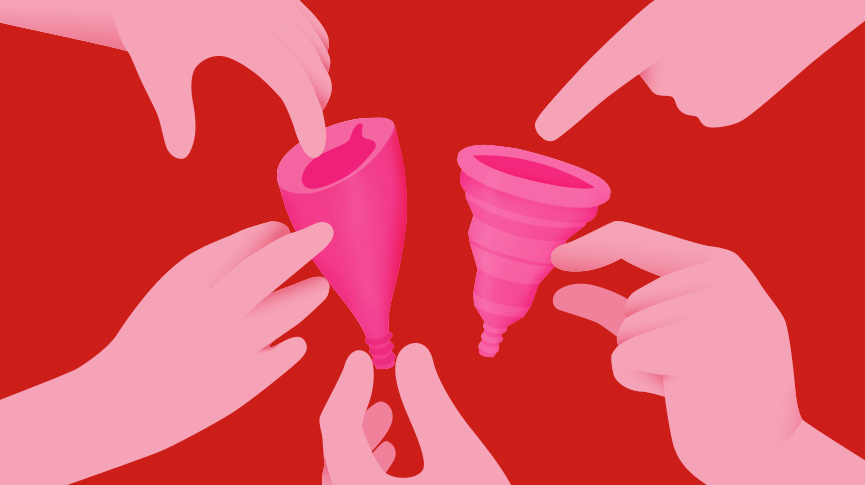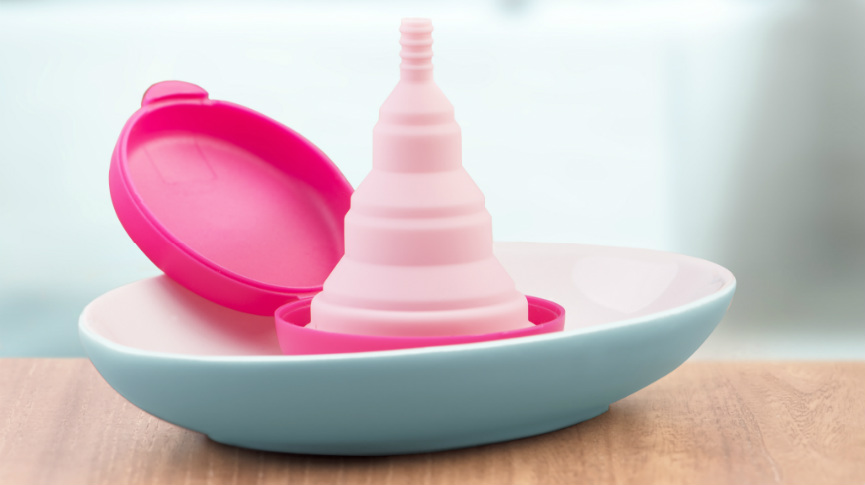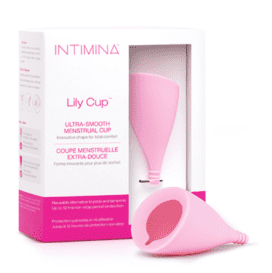Even though menstruation is often seen as taboo in many communities and families, there has been significant progress in recent years in many countries worldwide. The positive change in approaching menstruation today is due mainly to increased media coverage, educational initiatives, menstrual product innovation, activism, and advocacy.
All this combined is resulting in younger generations, such as Gen Z and beyond, approaching the topic without self-consciousness or discomfort. They discuss menstruation openly as a normal part of a girl’s or a woman’s life. They also care about the environment, so they often opt for sustainable products. One of those products is a menstrual cup, an alternative to disposable menstrual products that many women today are switching to.

Sustainable menstruation is gaining momentum; in an INTIMINA study of 1,030 respondents, 40% said they switched to a cup because they wanted to reduce their personal menstrual waste. The average woman uses more than 11,000 disposable menstrual products in her lifetime and that it takes hundreds of years for this waste to decompose, so this is a positive trend.
There are other important reasons for switching to menstrual cups. One is financial spending, and 20% of respondents said this was their most significant switch factor. Menstrual cups such as the Lily Cup can be reused for up to 10 years, representing significant savings compared to the monthly costs of disposable products.

The survey respondents said they would use the saved money on travel, food and outings (46%), fun experiences (26%), clothes, beauty and skincare (16%). Some respondents explained they would use the savings for paying off debts, donating to charity, hobbies and education, or on their children.
22% of respondents named health benefits as reasons for switching to a cup. They care about using safe and chemical-free products for their body. Quality menstrual cups are made of medical-grade silicone and do not contain any harsh chemicals or dyes found in disposable products.
Women who switch to menstrual cups also find that they are more convenient and comfortable than traditional menstrual products. They have a higher capacity for menstrual blood, meaning women can wear them for longer periods without worrying about leaks or odour. Additionally, menstrual cups can be worn during all physical activities, including swimming, without the risk of leakage.

Despite all the benefits of menstrual cups, many women still need reassurance. The most common question is how to insert or remove a cup (9%) and place it correctly so it does not leak (23%). All this takes practice, but only a little. 17% of INTIMINA’s respondents said they inserted the cup correctly on the first try. For 29%, it took several days of practising, and for 26%, it took more than two cycles to get it right. And 90% of all respondents would recommend the menstrual cup to a friend or a family member.
Interestingly, 47% said the menstrual cup is not affordable and represents an investment. Switching to a menstrual cup depends on various factors. Still, in terms of savings, women can save thousands of dollars if they replace pads and tampons with one menstrual cup that costs, on average, $30 and can last for up to 10 years. INTIMINA’s calculator can help with not only calculating personal menstrual waste but also possible savings when opting for reusable products.
The survey has shown that switching to a menstrual cup is a simple and effective way for women to support sustainable menstruation while also improving their overall health and well-being. By continuing to educate people about menstrual health and promoting reusable menstrual products, brands, organisations and individuals can work towards a more sustainable future. And ensure that everyone can access safe, affordable, and effective menstrual products.











